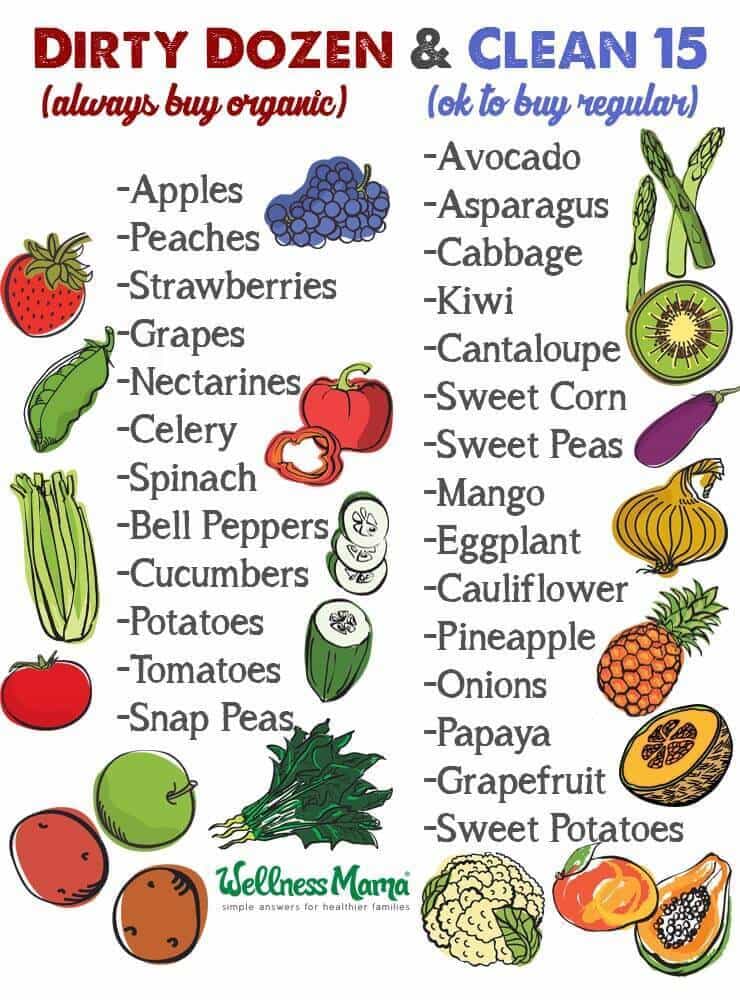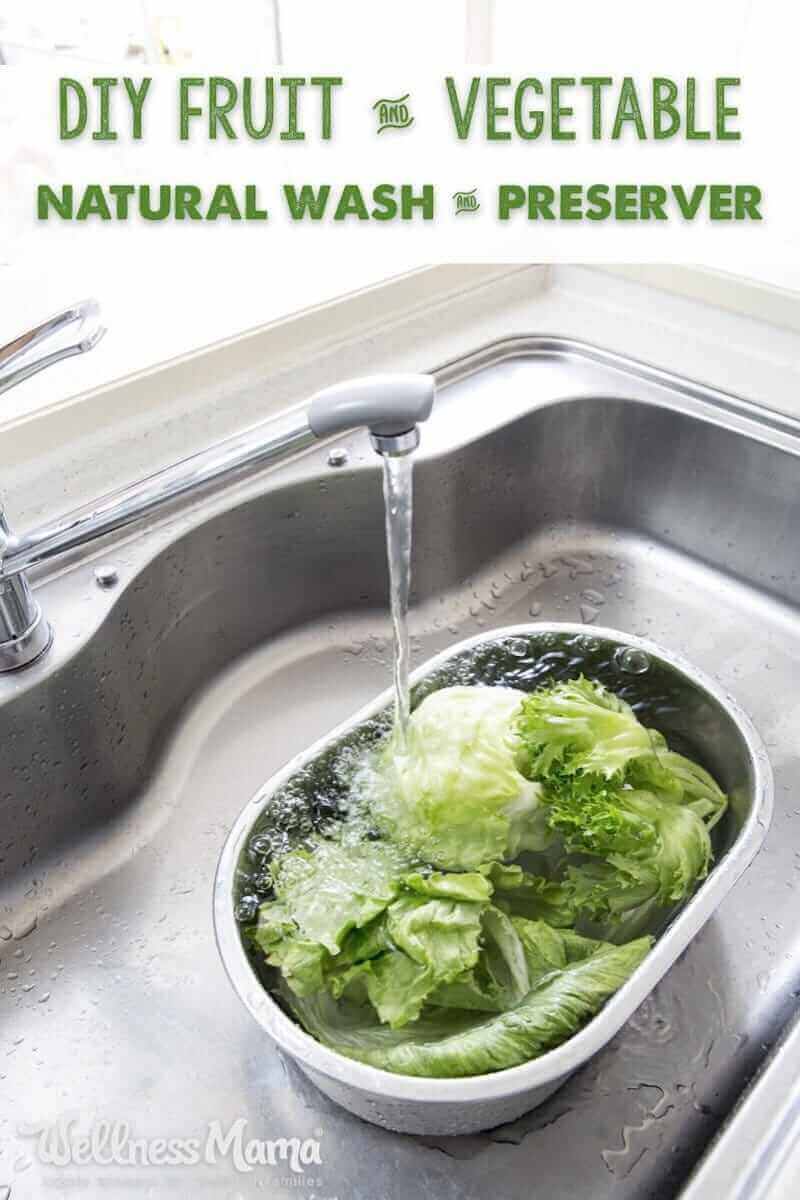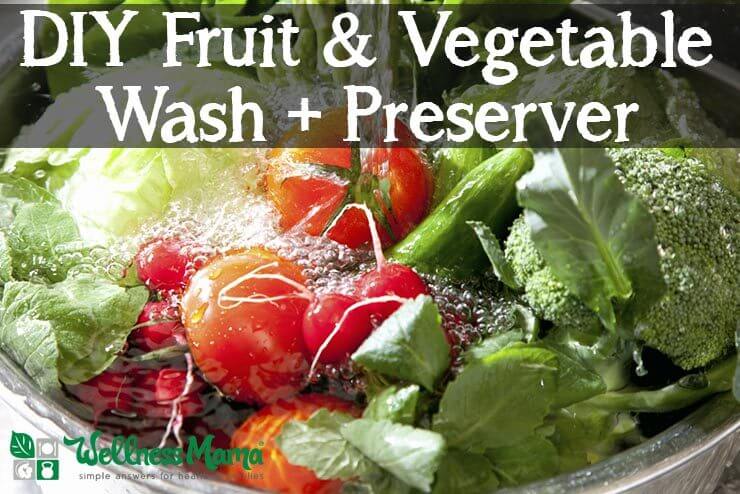In a perfect world, we’d all have the food budget to meal plan only organic foods, have someone else cook them for us (kidding- sort of), and use the time to relax in a nice detox bath.
Since reality is often not very close to perfection, (and I’m yet to find a way to have an organic on-demand chef so I have time to take relaxing baths, or a dryer that automatically folds clothes), compromise is often necessary.
If fully organic isn’t in your budget, you can eliminate much of the pesticides from your foods by prioritizing certain organic foods.
Prioritizing Organic Foods
For our family, buying organic, grass-fed and pasture raised meats is a first priority, since conventional meats are often much higher in pesticides, antibiotics and unhealthy fats (and lower in Omega-3s and CLA). For produce, we prioritize buying the “Dirty Dozen” organic and don’t sweat the “Clean 15” when budget is tight.
The Environmental Working Group has named these as the most recent list of Dirty Dozen and Clean 15:

Organic or not, if I didn’t grow the produce myself or get it from family friends who are trusted farmers, I always make sure to carefully wash all produce that we eat. This is especially important with non-organic produce, but I even wash organic store-bought produce as well.
Store-Bough Produce Wash?
The University of Maine studied the most popular store bought fruit and vegetable wash brands and found that not only did many of them contain chlorine (to kill bacteria on the produce), but in lab testing, they were no more effective than using distilled water.
Unfortunately, neither commercial washes or distilled vinegar completely removed waxes, pesticides, and other residue from produce.
The solution?
Homemade fruit and vegetable washes are effective at removing residue from produce and also help preserve the fridge-life of these foods since bacteria that may cause decay is removed.
To be most effective, different vegetables call for different methods of washing, but three simple and inexpensive recipes will clean virtually every type of produce.
How to Wash Most Fruits & Vegetables
The simplest and least expensive natural produce cleaner is plain white vinegar. For most produce with a skin, this is all I use. I’ll place the fruits and veggies in a freshly cleaned kitchen sink (or a large bowl), fill with water, and add 1 cup of white vinegar.
I let soak for up to an hour, scrub gently and rinse.
To prevent decay, I let dry fully before returning to the fridge.
How to Wash Lettuces & Greens
Lettuces and greens are more delicate and more difficult to wash. They also are more likely to contain insects or other little visitors.
For greens, I dissolve 2 tablespoons of salt in 2 cups of water and add the juice of one lemon. I spray this on the greens, let sit for about a minute, and then add them to a sink of diluted vinegar water. I soak for about 15 minutes, rinse in cool water and dry completely (a salad spinner helps), before putting in the fridge.
I like to store greens in mason jars with lids to keep them fresh longer.
How to Wash Berries
Berries are perhaps the most difficult to clean because they are so delicate and take on the flavor of anything they come in contact with (vinegar flavored blueberries anyone?).
I use diluted fresh lemon juice to clean berries. I mix 2 cups of water with 1/2 cup fresh lemon juice and spray on the berries. I make sure the berries are well coated and then soak in fresh water for about 15 minutes. Dry completely before storing in the fridge!
Other Produce Tips:
Produce Sticker Numbers:
You know those annoying little stickers that you have to pull off of your fruit before you can eat it? Those stickers can also be an easy way to tell how your produce was grown. Each fruit has a four of five digit Price Look-up (or PLU) code that is given based on how it was grown. Produce that is conventionally grown has a four-digit PLU code and generally begins with a three or four. Organically grown produce has a five-digit code and begins with a nine. Genetically modified produce has a five digit code as well, but the first number is an eight.
For example, the PLU for a conventionally grown banana would be 4011; an organic banana is coded 94011; and a genetically modified banana is 84011.
Most produce is clearly labeled as organic or conventional these days, but this tip can help you verify how your food was grown.
Do you buy all organic produce or do you get some conventional produce?



Leave a Reply